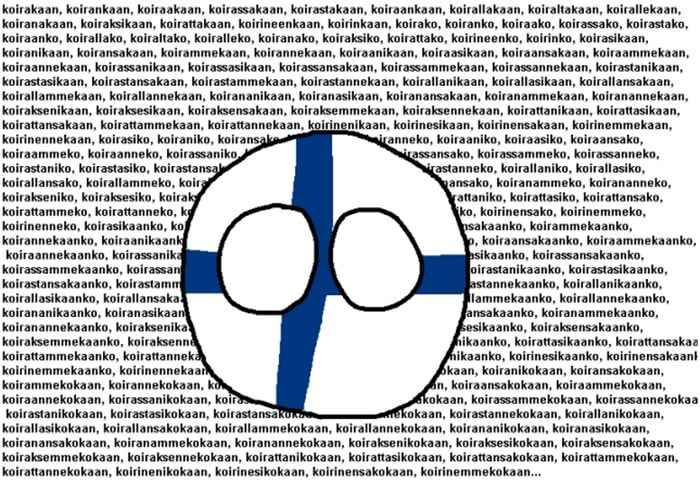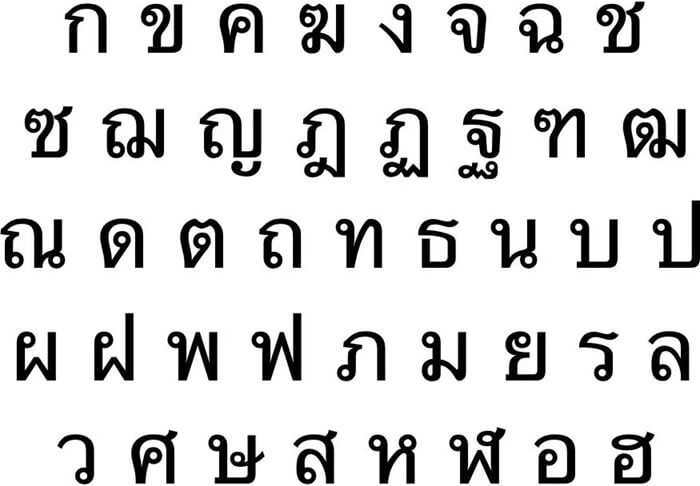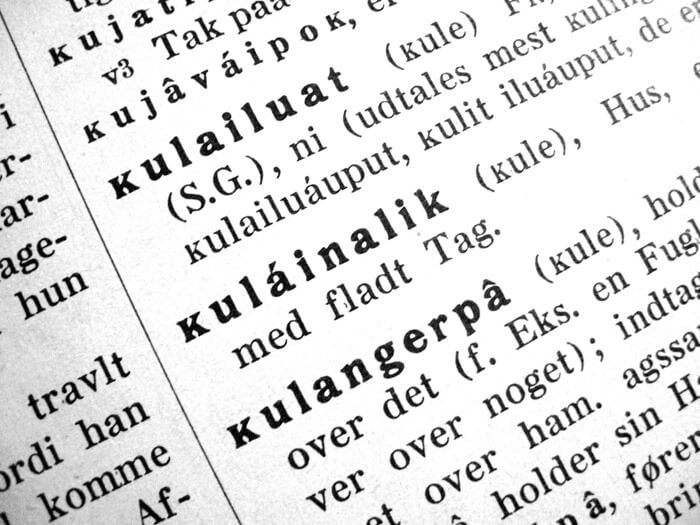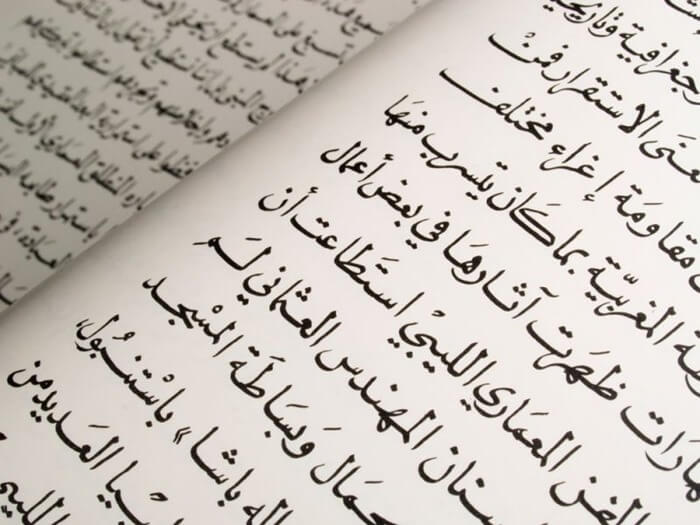Learning a new language is fun, memory-enhancing and flexible thinking. However, you cannot call it easy. And it can become even more difficult if you intend to master one of the most difficult languages in the world... After all, this will have to take into account not only the laws of the functioning of words and sentences, but also the cultural characteristics of native speakers.
Introducing the Top 10 Most Difficult Languages in the World to Throw Up Even the Experienced Linguist. It is based on the study of specialized linguistic resources, as well as language records from the Guinness Book of Records.
10. Polish
 Spelling and grammar are two areas that will pose a lot of challenges for the Polish language learner. Polish words are loaded with consonants, making them difficult to pronounce and write. For example, szczęście means "happiness" and bezwzględny means "ruthless."
Spelling and grammar are two areas that will pose a lot of challenges for the Polish language learner. Polish words are loaded with consonants, making them difficult to pronounce and write. For example, szczęście means "happiness" and bezwzględny means "ruthless."
Polish grammar has seven cases in the declension system of nouns. Plus there is one more - vocative. As one linguist put it, "It's like German on steroids."
But the good news is that the Polish language uses the Latin alphabet, so the letters will be familiar to those who are familiar with the English language.
9. Finnish
 Has a reputation for being a difficult language to learn, and for good reason. Nouns in it have 15 cases. The Finnish language is part of the Finno-Ugric language family, so it has no Latin or German influence to help you guess what a word means. In theory, the pronunciation of Finnish words is fairly straightforward, but they have long vowels and consonants.
Has a reputation for being a difficult language to learn, and for good reason. Nouns in it have 15 cases. The Finnish language is part of the Finno-Ugric language family, so it has no Latin or German influence to help you guess what a word means. In theory, the pronunciation of Finnish words is fairly straightforward, but they have long vowels and consonants.
And if you are intrigued by a place with such a complex language, we recommend visiting Helsinki, recognized as one of the the best cities of the future 2018-2019.
8. Navajo
 This language is so little known and unusual that during the Second World War, the US Air Force called for the service of the Navajo cryptographers. They used their native language to communicate by telephone and radio. If you are interested in the history of these ransomware, we recommend watching the film by John Woo, "Windwalkers," filmed in 2002.
This language is so little known and unusual that during the Second World War, the US Air Force called for the service of the Navajo cryptographers. They used their native language to communicate by telephone and radio. If you are interested in the history of these ransomware, we recommend watching the film by John Woo, "Windwalkers," filmed in 2002.
Navajo has only 4 vowel sounds, but many consonants. Moreover, one word can contain either only sibilant consonants, or only sibilant consonants. This is called "consonant harmony".
In addition to all the complexities, the Navajo language has sounds that have no counterpart in European languages.
7. Thai
 The Thai language is not complicated by its grammar, but by pronunciation, in which there are five different tones, as well as long and short vowel sounds. The Thai alphabet has a staggering 44 consonants, 28 vowel forms, and 4 diacritics for tones.
The Thai language is not complicated by its grammar, but by pronunciation, in which there are five different tones, as well as long and short vowel sounds. The Thai alphabet has a staggering 44 consonants, 28 vowel forms, and 4 diacritics for tones.
The Thai alphabet does not use letters of the Latin alphabet. It comes from the Khmer alphabet and has a peculiar rounded appearance. At the same time, unlike the Cyrillic or Latin alphabet, in Thai there is no difference between lowercase and uppercase letters. The sentences are separated from each other by a space.
Still not impressed? Then here's another fact for you: there are several registers of speech in Thai.
- Street or colloquial - it is spoken with friends.
- Elegant or formal - it is spoken to strangers.
- Rhetorical - for public speaking.
- Religious - used to address clergy.
- Royal - to discuss actions or appeal to the royal family. The royal family in Thailand is deeply respected, and there is a very large difference between royal and colloquial speech styles.
6. Eskimo
 The Eskimo language, which got into the Guinness Book of Records, probably means the Eskimo branch of the Eskimo-Aleutian languages.
The Eskimo language, which got into the Guinness Book of Records, probably means the Eskimo branch of the Eskimo-Aleutian languages.
Those who decide to learn the language of the "children of frost" (as Jack London called the Eskimos) will have to learn sixty-three forms of the present tense. But these are still flowers. And berries are 252 endings (inflections) for simple nouns.
Eskimo speakers think figuratively. And this imagery is clearly demonstrated by the word "ikiaqqivik". It translates as "travel through the layers" and stands for the Internet.
5. Chippewa
 Learning the language of the Chippewa (Ojibwe) Indian people living in the United States will bring real pleasure to the lover of “burn with a verb”. After all, it has about 6 thousand verb forms.
Learning the language of the Chippewa (Ojibwe) Indian people living in the United States will bring real pleasure to the lover of “burn with a verb”. After all, it has about 6 thousand verb forms.
The Chippewa language does not have a uniform standardization, as it exists as a chain of interconnected local varieties, usually called dialects. However, a couple of words are known to every fan of stories about cowboys and Indians - these are "wigwam" and "totem".
Due to its complexity, the Chippewa language got into the Guinness Book of Records.
4. Hyda
 This endangered language is used by representatives of the Haida people living in America and Canada.
This endangered language is used by representatives of the Haida people living in America and Canada.
The complexity of this language (entered in the Guinness Book of Records) is due to the fact that it has seventy prefixes. At one time, the Haida language had over 30 different dialects. Today only three of them remain. The tone system used depends on the dialect.
Haida language is surprisingly detailed and varied. For example, there are approximately 50 different ways to describe someone falling, depending on how they landed and what caused the fall.
3. Tabasaran
 This is the most difficult state language in Dagestan. A significant difficulty for those who decide to study the Tabasaran language are the cases of nouns. There are, according to various estimates, from 44 to 52.
This is the most difficult state language in Dagestan. A significant difficulty for those who decide to study the Tabasaran language are the cases of nouns. There are, according to various estimates, from 44 to 52.
Add to this ten more parts of speech, among which there are no prepositions (they were replaced by postpositions) and three dialects and you will understand why Tabasaran is included in the Guinness Book of Records as one of the most difficult languages in the world.
2. Arabic
 In second place in the ranking of the most difficult languages in the world is Arabic, which is also in the top five most popular languages in the world.
In second place in the ranking of the most difficult languages in the world is Arabic, which is also in the top five most popular languages in the world.
There are dozens of varieties of the Arabic language, usually classified by region or country. Moreover, these varieties can be radically different from each other. So, the first step is to choose the dialect you want to learn, but that is the easy part.
Arabic is a language with a non-Latin alphabet. Its 28 letters are easier to understand than thousands of Chinese characters, but you still have to get used to the new spelling system - from right to left.
What makes Arabic reading and writing especially difficult for beginners is the elimination of most vowels in words. There are also features of spoken Arabic that make it difficult to learn. Some of the sounds used are simply unfamiliar to Russian speakers.
1. Chinese Mandarin
 When asked what is the most difficult language in the world, many linguists and the Guinness Book of Records give the answer: "Chinese". We are talking about the North Chinese language (aka Putonghua, aka Mandarin in Western literature), which includes Chinese dialects that are close to each other. They are spoken by the population of most of North and West China.
When asked what is the most difficult language in the world, many linguists and the Guinness Book of Records give the answer: "Chinese". We are talking about the North Chinese language (aka Putonghua, aka Mandarin in Western literature), which includes Chinese dialects that are close to each other. They are spoken by the population of most of North and West China.
Mandarin Chinese is a real challenge for polyglots for a number of reasons:
- First of all, China's writing system is extremely complex for people accustomed to the Latin and Cyrillic alphabets. Chinese learners have to memorize many characters that resemble complex drawings. Moreover, hieroglyphs are not words, but concepts.
- The lighter writing system (pinyin) makes it easier to write characters. But this is just another system that will have to be learned for those who want to read and write in Chinese.
- Writing is not the only difficult part of learning Mandarin. The tonal nature of the language is also very important. Mandarin Chinese has four tones, so one word can be pronounced in four different ways, and each pronunciation has a different meaning. For example, ma can mean “mother,” “horse,” an interrogative particle, or “swear,” depending on how you say it.
However, for many Chinese (and other foreigners) it is as difficult to learn Russian as it is for a Russian person to learn Chinese.
When it comes to learning a foreign language, the difficulty mainly depends on how different it is from the languages in which you are already fluent. However, any of the languages mentioned in this list can be learned without much difficulty. The main thing is to draw up a lesson plan and find a good teacher (ideally a native speaker). In addition, motivation plays a huge role in language learning, as in any other business. Lack of interest will make any language incredibly difficult, regardless of your native language and the differences between it and what you are learning.

